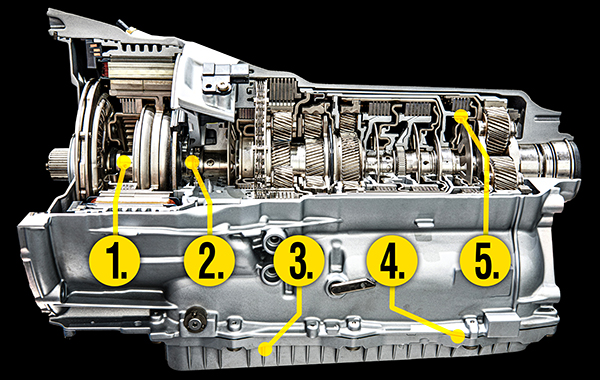5 Early Signs of a Failing Transmission
December 21, 2021

Just thinking about a car transmission going bad can cause your heart to beat a little faster. Most vehicle owners don’t understand the intricacies of how an automatic transmission works. However, everyone knows it’s important to your vehicle, and everyone knows it’s an expensive component to repair.
Prevention and early detection can prevent further, more serious damage. Be aware of these signs to avoid transmission failure, and save money in the long run.
What Causes a Transmission to Fail?
Over time and miles, heat in the transmission causes the protective conditioners in transmission fluid to break down. This results in the formation of deposits in the transmission. Those deposits can break away and clog the narrow fluid passages of the transmission and internals of the valve body. This restricts fluid flow and reduces the fluid’s ability to cool and protect vital components in the transmission.
5 Signs of Transmission Trouble
1. Hum or whine noises
Abnormal car noises are never a good sign. When it comes to a transmission, these noises could mean you have a bad bearing, the transmission fluid is too low, or the clutches are worn or damaged. A transmission should always be smooth and quiet.
2. Burnt transmission fluid smell and dark fluid
A burning smell in your car is always a major red flag. If your vehicle’s transmission fluid smells bad, it’s past due for replacement! Most modern passenger vehicles don’t have a dipstick, and the few that do are slowly phasing out. The smell of burnt fluid means the protective additives are depleted in the transmission fluid. The internal parts of your transmission are likely to become damaged and serious sludge buildup may occur. To prevent further damage, do NOT drive your car until this issue is properly addressed.
3. Slow or delayed shift response
If your car isn’t accelerating fast enough when you’re pressing on the gas pedal and feels noticeably delayed, it could mean your transmission is having issues. This could be a sign of valves sticking in the transmission’s valve body or potential problems with the shift solenoids that are used to actuate shifts.
4. Leaking fluids
If you see any fluids under your car, it is always a concern; If it has a red color, your car is most likely leaking transmission fluid. The leak could be coming from a gasket, a seal, or one of the transmission’s cooler lines. It’s recommended to have an automotive technician locate where the leak is coming from as soon as possible. It could potentially be a safety issue if the fluid is leaking onto hot exhaust components. Your transmission fluid level is vital to the performance and longevity of your transmission so it can function properly, lubricate, and cool the internal components.
5. Hard shifting
Hard shifting occurs when the transmission fluid is worn or contaminated, or if the fluid level is low. This causes significant wear on internal components like your gears, clutches, and the transmission’s pump.
Prevent a Failing Transmission
Performing a BG Transmission Service safely removes and dissolves damaging internal deposits, acids, and varnish from the transmission’s components. This service is performed by a trained, certified technician that uses a specialized machine to exchange the worn fluid from the vehicle, and replaces it with new high-quality ATF. A transmission fluid conditioner is then added to further fortify the new ATF.
The result:
- A clean and properly functioning transmission
- Restored transmission performance
- Longer transmission life
- Conditioned fluid to last longer and protect against high heat
- Protects your vehicle investment
- Prevents unexpected transmission problems
To have your transmission serviced with BG Products, or more information about the BG Transmission Service, click the button below to find your nearest BG shop.

